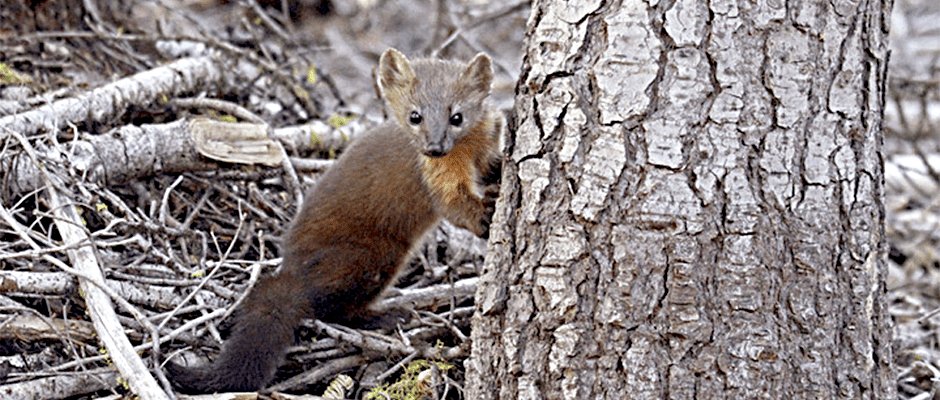Share this article
JWM study: Pacific martens avoid resorts during ski season
While many people enjoy the recreational activities that ski resorts offer, they may not realize that wildlife uses the same areas as habitat.
In a study published in the Journal of Wildlife Management, lead author Keith Slauson, a research fellow with the Pacific Southwest Research Station of the U.S. Forest Service, and his colleagues studied the effects of ski area development and winter recreation activities on the movement and occupancy of Pacific martens (Martes caurina) in the Lake Tahoe region of California and Nevada.
The team compared three ski areas and three control study areas to determine how the species was faring. While one of the ski areas was privately owned, two were on Forest Service-managed land — one in El Dorado National Forest and one in the Lake Tahoe Basin Management Unit.
“It’s the responsibility of the Forest Service as a land manager to understand and balance the needs for recreation for people and minimize impacts on sensitive species like martens as well as other resources,” Slauson said.
The researchers used live traps and hair snares from 2009 to 2011 to determine the effects of habitat loss and fragmentation on martens as well as the effects of recreational activity during the ski season. They measured their seasonal occupancy and individuals’ movements in each study area using live capture and DNA collected by hair snares on systematic sampling grids.
Slauson and his colleagues found that the martens moved between forest patches with the narrowest ski runs and roads in the ski areas throughout the year. While the martens’ occupancy rates were the same inside and outside of ski areas in the spring and summer, during the winter when most recreational activity was occurring in ski resorts, their occupancy rates were significantly lower, Slauson said.
The team also found that compared to non-developed forest area, functional connectivity in ski resorts is reduced by more than 40 percent. “They’re not just freely moving throughout the forest,” he said. “They’re selecting the most narrow crossings.”
Slauson said he also found that although martens are breeding at similar rates on and off ski areas, recruitment issues arise in ski areas. “This suggests the population at ski areas are just maintaining themselves and not contributing more offspring to the larger population.”
Slauson suggests ski resort managers take some of the results of the study into consideration, such as maintaining large patches of habitat for denning females to support reproduction and maintaining shorter ski run crossings suitable for the animals’ movement.
“Along the edges, it’s really important to have plenty of places for them to move in when seasonal recreation activity picks up,” he said.
Header Image: A female Pacific martens leans up against a tree in California’s Lassen National Forest. ©Oregon State University








